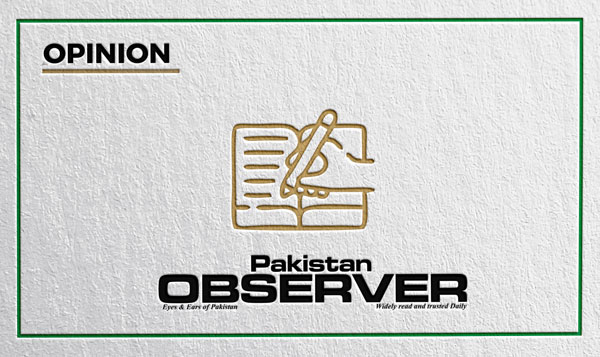Articles and letters may be edited for the purposes of clarity and space.
Environmental impact of tourism
Tourism in Pakistan has grown significantly, attracting visitors to its diverse landscape and rich cultural heritage. However, this rise in tourism brings environmental challenges that need careful management to ensure sustainability. One major concern is the degradation of natural landscape. Popular destinations like Hunza, Swat and Skardu face deforestation, soil erosion and habitat destruction due to the construction of hotels and roads. These activities threaten biodiversity and increase the risk of natural disasters like landslides. Pollution is another significant issue. Increased tourist activity generates more waste, including plastic bottles and food packaging, which often ends up littering natural sites. Inadequate waste management systems exacerbate this problem, leading to polluted rivers, lakes and hiking trails. Lake Saif-ul-Malook, for example, has suffered from severe pollution due to careless waste disposal by visitors.
Water resources are also under pressure. In regions like Gilgit-Baltistan, the demand for water by hotels and resorts can lead to over-extraction from rivers and streams, affecting local communities and the environment. This overuse of water resources can reduce availability for agriculture and other essential needs.
Air pollution from increased vehicular traffic is another concern, contributing to greenhouse gas emissions and deteriorating air quality.
ESHA KHAN
Oghi, Manshera
Herald of a new era
“Afghanistan has come out of isolation,” proclaimed Taliban spokesman Zabihullah Mujahid, marking a pivotal moment. The recent meeting in Doha between Taliban representatives, UN officials and international envoys ended on a positive note. For a country long plagued by war, such optimism has been a distant hope. The spirit of cooperation and trust fostered at the meeting promises a brighter future for the Afghan people.
The Doha meeting did not yield any significant decisions but solidified the international community’s preference for a gradual, consultative approach over coercive measures, supported by various sectors including independent rights groups. For Pakistan, re-engaging with Afghanistan is not merely an option but a necessity. While terrorism remains a significant obstacle to increased economic and strategic cooperation across the region, dialogue remains the path to resolution.
A stable Afghanistan not only benefits Central Asian States but also holds potential for global benefits. Access to sea ports in Iran and Pakistan could unlock Afghanistan’s natural resources, long constrained by infrastructure challenges. Cultural and intellectual exchanges offer healing from the scars of war.
It is imperative for all to maintain faith and support Afghanistan’s rehabilitation as a respected member of the global community. As a neighboring Islamic country, it is incumbent upon Pakistan to assist Afghanistan in overcoming its political and economic crises.”
MUNAWAR SIDDIQUI
Lahore
Palestine-Israel conflict
Between Palestine and Israel, there is a conflict that has major negative economic implications for both Europe and the US. In Europe, the instability in this region reverberates through energy sectors, directly affecting oil and gas prices by disturbing trade routes and raising costs for businesses. The influx of refugees from the conflict puts pressure on social services such as healthcare, education and social welfare, requiring substantial donations to provide humanitarian assistance and integrate them into society. Investors avoid areas with high levels of geopolitical risk, thereby restraining potential economic growth and development possibilities.
In America, the economic impact is also profound. Every year, financial aid to Israel from the United States reaches billions of dollars—an amount that affects federal budget allocations and leads to debates about whether this aid is economically beneficial or burdensome. Due to the ongoing conflict, American companies operating in this region are exposed to increased risks and uncertainties, including disruptions in supply chains, higher insurance premiums and volatile market conditions.
Significant changes in oil prices influence transportation expenses and consumer prices. The conflict also necessitates balancing political support for Israel with maintaining favorable relations with other Middle Eastern countries like Saudi Arabia.
Overall, the economic effects of the Palestine-Israel conflict are predominantly detrimental. They influence energy markets, trade routes, investment decisions and budget allocations, thereby undermining the economic stability and growth prospects of both regions.
ROYYAM SAQIB
Islamabad










